11 Exotic Fruits You Should Try

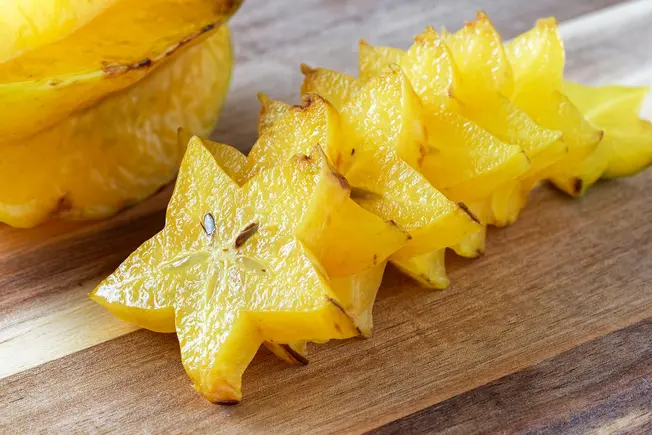
Star Fruit (Carambola)
A waxy, sweet/tart fruit that tastes of citrus, apple, and plum, star fruit hails from Southeast Asia. It turns golden yellow when ripe. Each has less than 40 calories but plenty of fiber and vitamin C. Just wash, slice, and eat -- no need to peel or seed. It's a stellar addition to salads and shines as a garnish. But avoid it if you have kidney problems. Star fruit has kidney stone-forming oxalic acid.
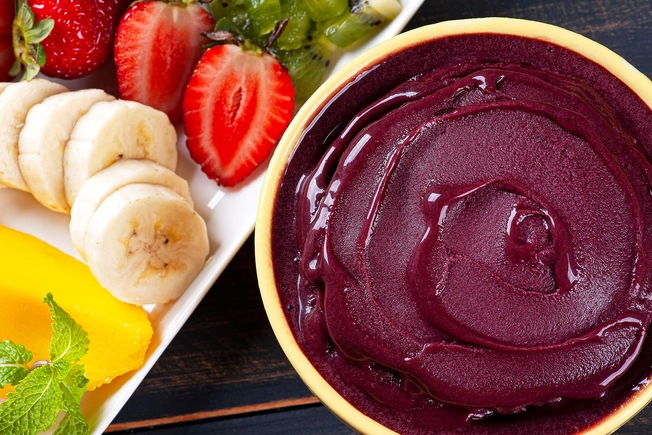
Acai
Acai (pronounced ah-sigh-ee) berries grow on palm trees native to South America. The fruit is about the size of a blueberry, has a large, inedible seed, and tastes like chocolate and wild berries. You can buy acai in smoothies or "bowls" (thick smoothies with toppings), or dried and mixed with granola. Some grocery stores also sell frozen acai puree. Like all berries, it's rich in fiber and antioxidants.
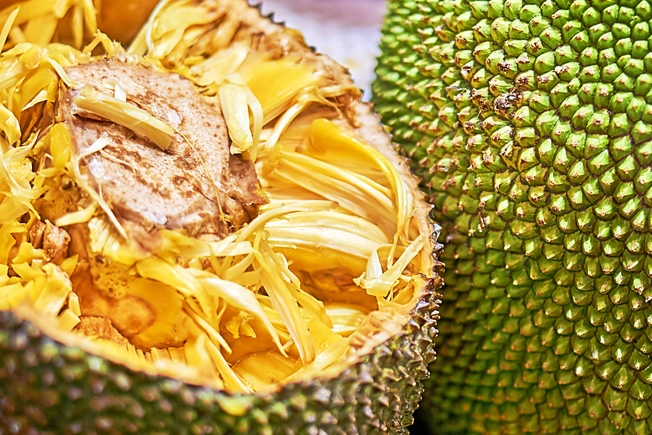
Jackfruit
Jackfruit is the world's largest fruit, tipping the scales at up to 100 pounds. Originally from India, it has gained popularity as a meat replacement in foods like tacos. Its stringy flesh mimics the texture of pulled pork. It can taste neutral or sweet, depending on how ripe it is. It's rich in vitamin C, B vitamins, and potassium. Some health food stores carry ready-to-prepare jackfruit in cans or pouches.
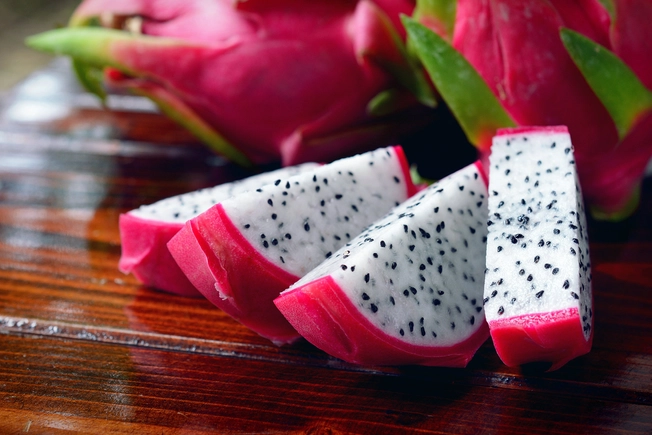
Dragon Fruit (Pitaya)
Dragon fruit grows on a cactus that originates in Central and South America. Don't eat the skin, which is scaly (like a dragon's) and yellow or pink. Scoop out the crunchy, pink or white flesh with a spoon. It's full of tiny black seeds and tastes like kiwi or pear. Eat as is, or add to cocktails or desserts. Dragon fruit offers plenty of fiber, vitamins, and minerals, and may even help keep your gut bacteria healthy.
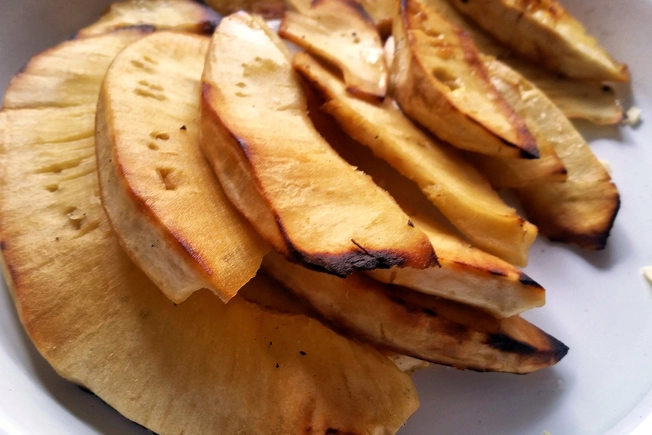
Breadfruit
A Pacific island staple for thousands of years, this football-sized fruit gets its name from the bread-like texture it gets when roasted. It lacks a strong flavor, but it can be eaten mashed or fried in place of potatoes. Fat-free and gluten-free, it's rich in complex carbs, fiber, and potassium. Buy it at Caribbean markets and farmer's markets. Before cooking, cut off the stem and place stem-side down to drain any sap.
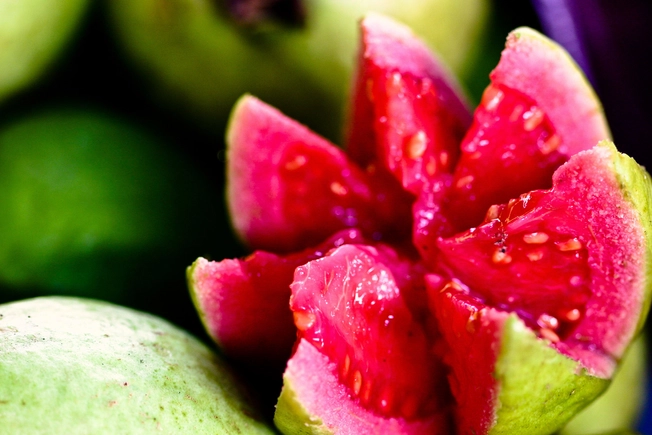
Guava
Guavas are thought to have originated in Central and South America. Juicy, sweet, and acidic, they might remind you of strawberries and pears. The edible rind can be white, yellow, pink, or red. Some guavas are seedless. Others have pale, edible seeds. One guava has more vitamin C than an orange, along with vitamin A, fiber, potassium, and phosphorus. Use them in juices, jams, and desserts.

Passion Fruit
Fragrant and purple, red, or yellow, passion fruit hails from South America. Spanish missionaries named it for its plant's five-petaled flower, which they saw as symbols of Christ's injuries in the crucifixion. It tastes similar to guava. It's rich in potassium and fiber, with just 17.5 calories per fruit. Slice one in half, then scoop out and eat the seeds and pulp. Or strain the pulp and enjoy as juice or in a sauce.
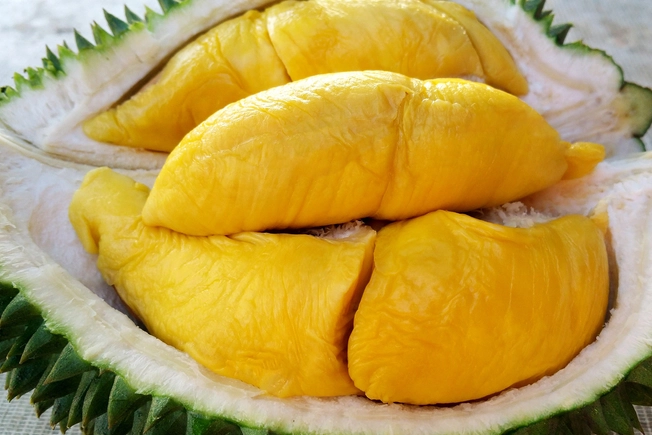
Durian
Durian is a southeast Asian fruit you either love or hate. It's nicknamed the king of fruits due to its custard-like flavor and size (up to 18 pounds). It's also called corpse fruit, thanks to its super-stinky smell. The spiky fruit is rich in iron, vitamin C, folic acid, and potassium. But it also has about 357 calories per cup. Eat durian fresh or use in desserts like ice cream. Look for it in Asian markets.
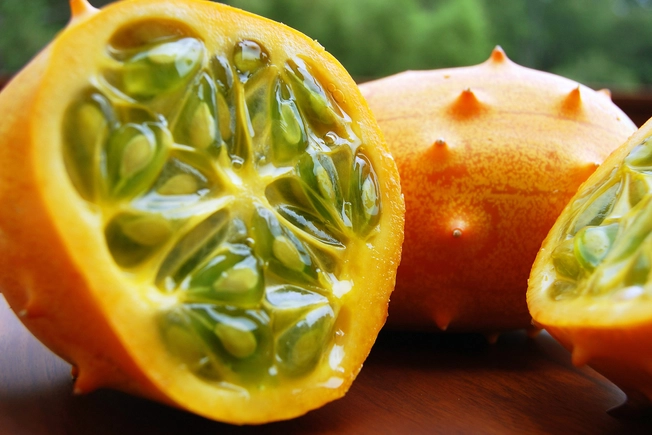
Horned Melon (Kiwano)
This striking-looking fruit of African descent is a member of the cucumber family. You eat the bright green jellylike interior, complete with the soft seeds. Its mild flavor has been compared to cucumber or lime with a hint of banana. Use it in salads, stir into yogurt, or turn into smoothies or juice. Horned melon is rich in antioxidants, including vitamin A, and low in calories.
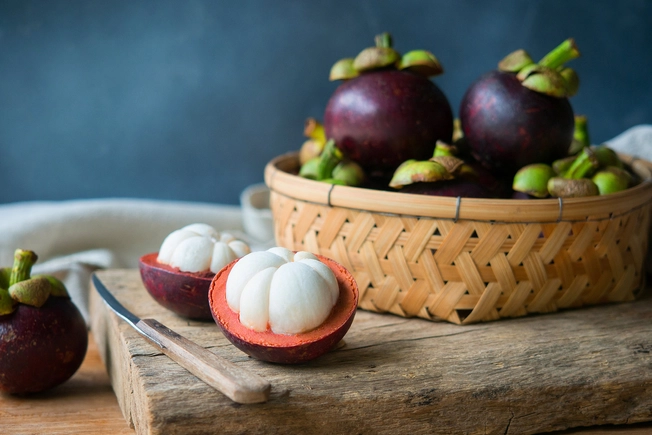
Mangosteen
This tangerine-sized fruit from the Asian tropics can be pricey and hard to find in the U.S. It has hard purple skin and soft white flesh, whose unique flavor hints of banana and peach. Eat it fresh, or try it in juice or jam. Mangosteen fruit is rich in xanthones, which are antioxidants thought to have anti-inflammatory and anti-cancer properties.

Prickly Pear
It's prickly, but it's not really a pear. It's a cactus native to the Americas. You can eat both the pads (nopales) and the fruit (tunas). When you buy it in a store, the prickly parts are often removed. (If not, wear gloves to peel it.) Prickly pear fruit has a watermelon-like taste and is rich in calcium and antioxidants, including vitamin C. Eat it plain or use it in jelly, candy, or syrup.